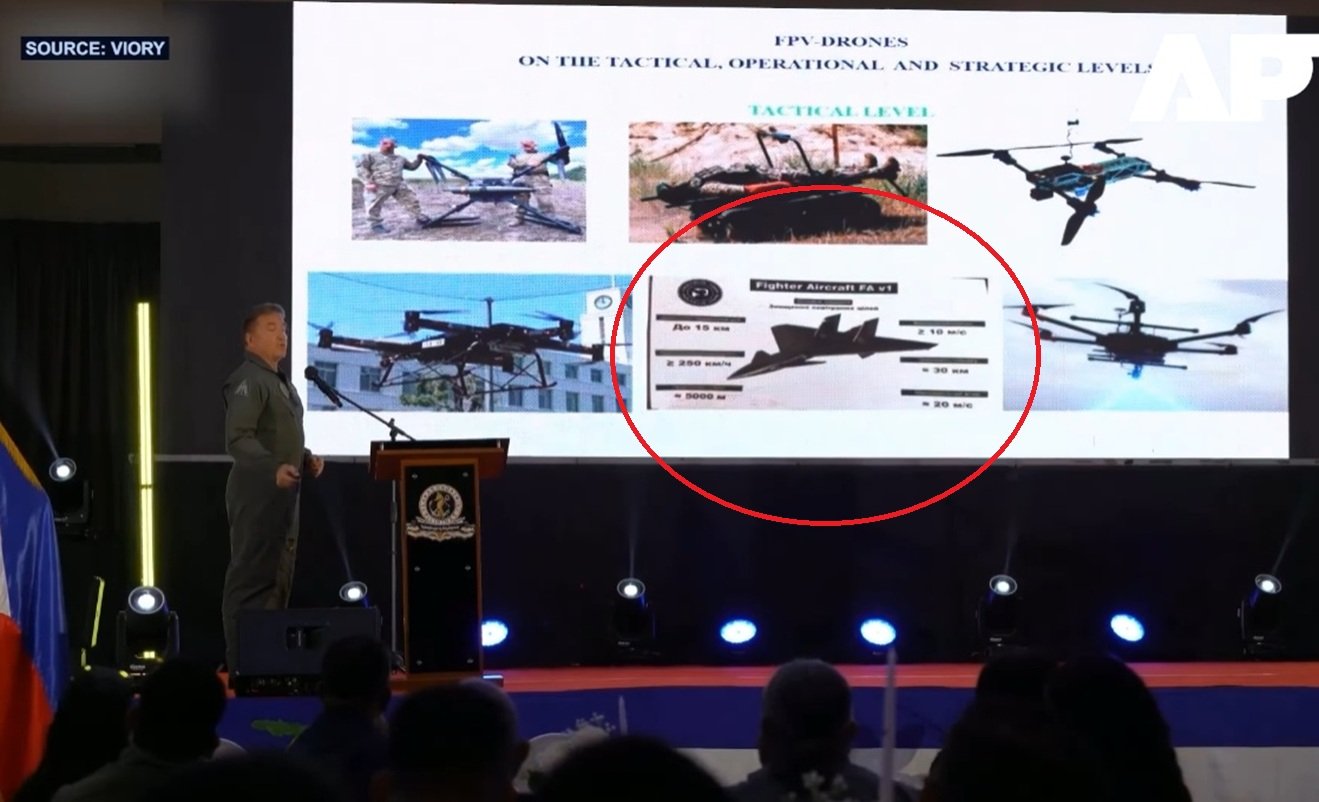Copyright defence-blog

The Philippines hosted its first-ever Drone Warfare Summit this week at Subic Bay, bringing together defense officials, manufacturers, and military representatives to discuss the evolving role of unmanned systems in modern warfare. The three-day event, running from October 27 to 29, highlighted the growing strategic importance of drones across air, land, sea, and underwater domains in the Indo-Pacific region. Ukraine presented its vision and operational experience in developing both aerial and maritime unmanned systems during the summit. As part of its presentation, the Ukrainian delegation revealed a concept model of a jet-powered unmanned fighter, identified as the Fighter Aircraft FA v1. The displayed slide featured technical specifications, indicating that the drone is designed to operate at speeds exceeding 250 km/h with an operational range of 30 kilometers. The concept also includes a service ceiling of 5,000 meters and a detection range of up to 15 kilometers for aerial targets. A presentation slide displayed during the summit showing the Ukrainian concept drone Fighter Aircraft FA v1 The model’s silhouette suggests a compact twin-tail configuration, resembling small-scale RC unmanned air vehicles under development globally. While no manufacturer name or production details were disclosed, the presentation reflected Ukraine’s expanding focus on indigenous drone technology capable of conducting both reconnaissance and potential combat missions. According to Ukrainian representatives, the FA v1 project embodies the country’s experience gained from the ongoing conflict, where unmanned systems have become a defining element of modern combat operations. The summit offered an opportunity for Ukraine to share lessons learned in countering electronic warfare and integrating autonomous systems into multi-domain operations. The Philippine Armed Forces used the event to underscore the strategic value of drones for an archipelagic defense posture. The country’s defense establishment views unmanned systems as essential for enhancing situational awareness, maritime surveillance, and rapid response capabilities across its dispersed island territories.



